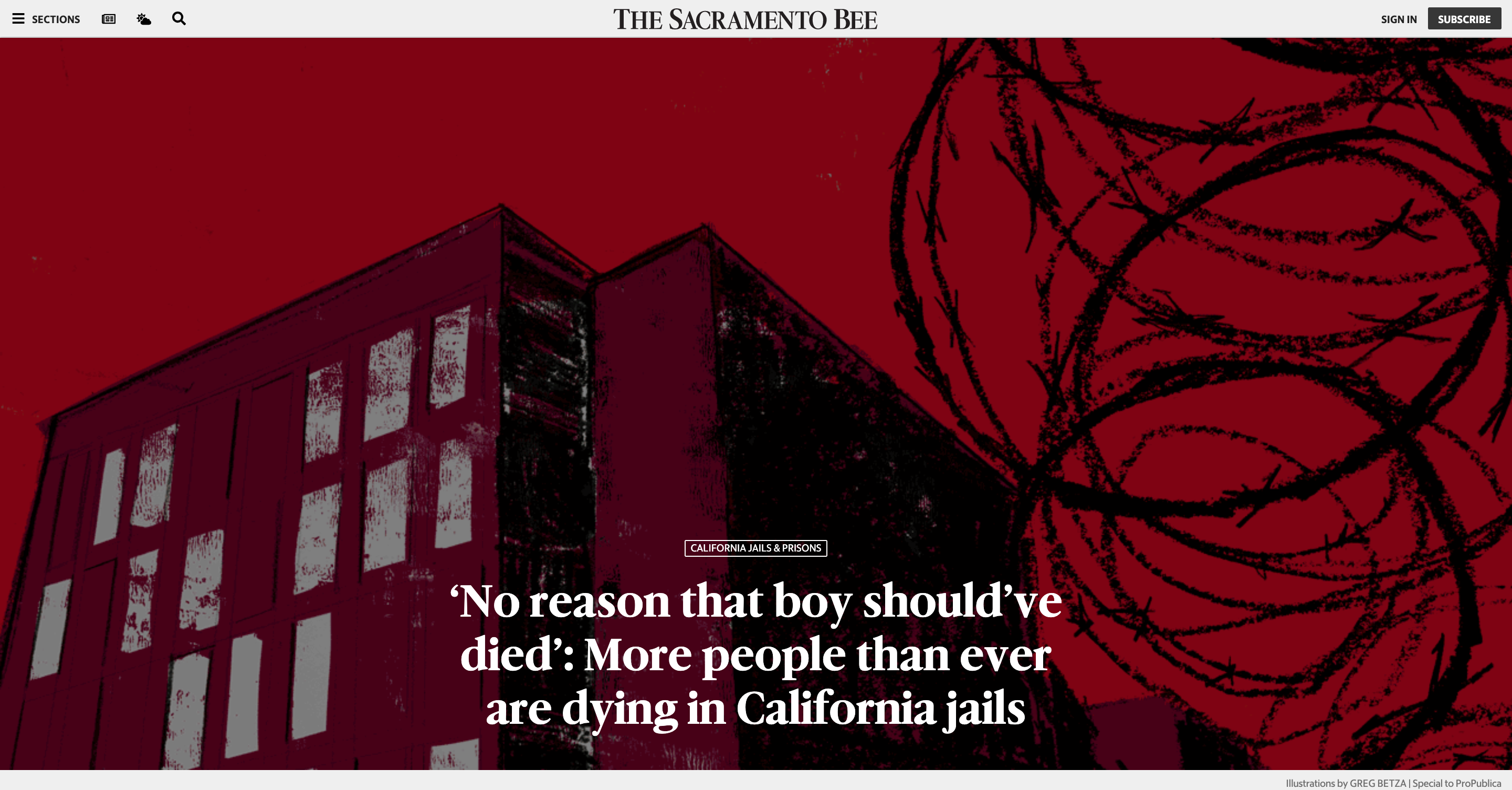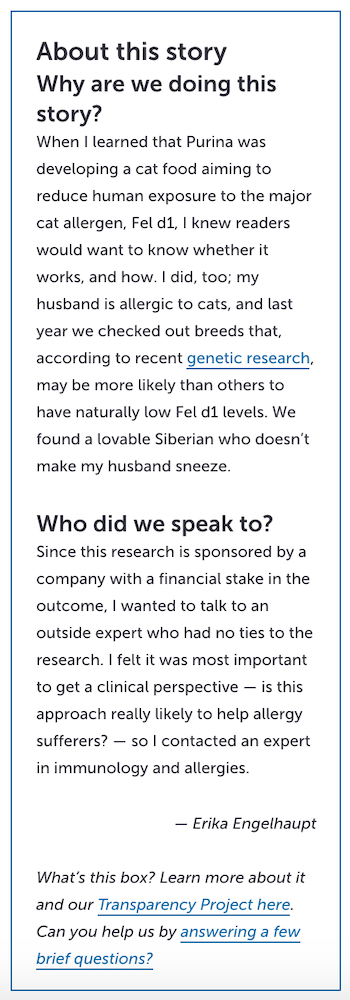Transparency in the journalism classroom: A how to
Journalism students are not ignorant of the issues our industry faces. They know about mergers and layoffs. They know about the public’s distrust and “fake news” accusations. They, like us, sometimes have to justify their career choice to their families and friends.
Because of that, they’re primed to learn. I’m not just talking about the basics — the ledes, inverted pyramid and AP style I teach every semester. These students want to learn everything possible to help positively impact their community and their industry. And they aren’t so set in their ways to hold them back from experimenting.
They deserve a journalism education that can help them do that.
In the past year working at the News Co/Lab, I’ve seen newsrooms prioritize community engagement and transparency to build trust. We’ve helped many of them. But I couldn’t stop thinking, “Why aren’t I teaching this to my students?”
The goal
So I decided to bring transparency into the classroom.
I’ve taught an intro to news writing and reporting class at the Cronkite School since 2014. All journalism students — broadcast, sports, print and PR alike — take the course, usually in their freshman year.
The class focuses on the basics, and ends in a culminating enterprise story. It’s a months-long project and their first foray into reporting outside of the classroom. It seemed like the perfect vehicle to teach the importance of showing your work in journalism — giving them a transparency tool to use now and in the future.
How? Through a “How I reported this story” sidebar.
The presentation
When assigning the enterprise story, I give this 30-minute presentation in class.
What starts as a stark conversation quickly turns to the fixes. People don’t understand how journalism works. People distrust the media. OK, now what? Remember: This is a solutions-focused student population. The point isn’t to have a scared and disheartened classroom. We talk through tangible examples of what we can do about it (see below), then end with the assignment details.

The examples
Frontline: The Putin Files
A Frontline documentary on Russian interference in the 2016 U.S. presidential election resulted in 70 hours of unaired interviews. Rather than bury them in the archive, producers showcased the full videos with transcripts on its own site — navigable by theme or source. Visitors averaged a hefty 28 minutes on the site.
Toronto Star Trust Project
The Toronto Star is a leader in pulling back the curtain on its reporting and decision-making. In this weekly feature, the paper explains how its reporters access public documents from the courthouse, how it decides when to public graphic photos and how it covered the Danforth shooting. One of its most successful features to date: “Blue Jays beat reporter Laura Armstrong on filing after a late game.”
McClatchy: How we reported this story
Stories across the McClatchy company often feature a new in-text “Behind our reporting” callout. This story — part of a bigger series on California’s jails and prisons — explains why and how they reported the story, the story idea’s origin and its sources. It also prominently features calls-to-action asking for readers’ own stories. Some papers have also written stand-alone, narrative pieces to go along with bigger investigations. In this example from the Kansas City Star, three writers go behind the scenes of a six-part serial murder investigation.
Science News Transparency Project
Niche publications can benefit from bolstered trust initiatives, too. In a partnership with the News Co/Lab, Science News introduced extended reporter bios at the end of articles, plus an “About this story” sidebar that provides additional content for complex or controversial stories (pictured right). One aspect that sets this apart: Science News includes a feedback form, asking readers to rate the publication’s trust and credibility, then explain how the sidebar affected their ratings.

The assignment: “How I reported this story” sidebar
Students should include a Q&A-style sidebar at the end of their 800-word enterprise story. The sidebar must include at least three questions relevant to their article. Encourage students to write the sidebar in a narrative, engaging format. I don’t provide a word count, but they usually end up around 200 words.
This is their time to tell their own story and lead readers through their own reporting process — to document their hard work and their setbacks all the same. (Beginning student journalists often have a hard time reaching sources because they don’t have the legitimacy of a news outlet backing them up.)
Students should answer at least three of the following questions:
- Why am I doing this story?
- Where did this story idea come from?
- Who did I interview?
- How did I interview them?
- How did I report this story?
- How did I take steps to being fair?
- Who did I reach out to?
- Who wouldn’t talk to me?
- What records did I obtain?
- What special reporting techniques did I use?
Students haven’t struggled to come up with material for their sidebars, but I talk through these questions to get the wheels turning — and show them the nuances between each one. For example, who they reached out to can be a lot different than who they interviewed!
The feedback
The first semester I incorporated this assignment, my class provided some feedback through a Google form. I wanted to know if they found the exercise useful and important, and how they could incorporate it into their own future reporting. If it was a flop, this group would’ve told me.
The results were overwhelmingly positive. The students pointed to the exercise as a simple way to improve trust and credibility in the journalist, news outlet and industry as a whole.
“It’s important because it creates a level of transparency that builds trust between the consumer and the journalist,” one student wrote. “The sidebar helps lift the mystery and shows how the work is being done so the audience understands why something turned out the way it did.”
Many pointed to transparency exercises like these as an essential way to humanize reporters and teach media literacy. One example:
It’s key to show our readers just what our job really entails. Clearly the general public has little understanding of how journalism works, and we need to change that with sidebars like these. This of course ties into transparency because the sidebar itself is inherently going into the details of what we actually did to create a story. In doing so, this reveals the journalist behind the work and their experiences. These combined offer the reader a transparent view into the creation of the story.
And here’s an unexpected benefit. Most of the students pointed to the sidebar’s value as a teaching tool — a way to reflect and refine. By documenting their process, they better recognized what worked and what didn’t. (I honestly hadn’t even thought of that!)
It was also interesting to contemplate my process as a reporter in order to see how I can improve it next time, and see what I should keep doing.
I think it’s important to reflect on the work we do for each story in order to better understand how we chose to craft the story.
A couple students brought up a real concern: “Does the work pay off?” That student mentioned focusing on long-form pieces where the sidebar would likely be more interesting and, hopefully, more successful. While they agreed the sidebar wasn’t much extra work, they’re already cognizant of the time pressure journalists face and want to use it wisely. Another described the transparency activity as useful, but said, “I feel like most audiences won’t pay attention to it.”
So, does it work? This year, researchers at the University of Texas at Austin Center for Media Engagement found this type of process box does increase reader trust. In the study, participants perceived a story with the box — compared to the same one without — as “significantly more reliable.” They also gave the news outlet higher ratings on 11 of 12 trust attributes.
But this is just one way to improve journalistic transparency. Research has shown that tools like these have greater impact together. I have no doubt that my students, like this one, will help lead newsrooms to make these practices more commonplace.
“If you work hard on a story for readers, you want them to be able to trust your work. Otherwise, it’s meaningless.”
